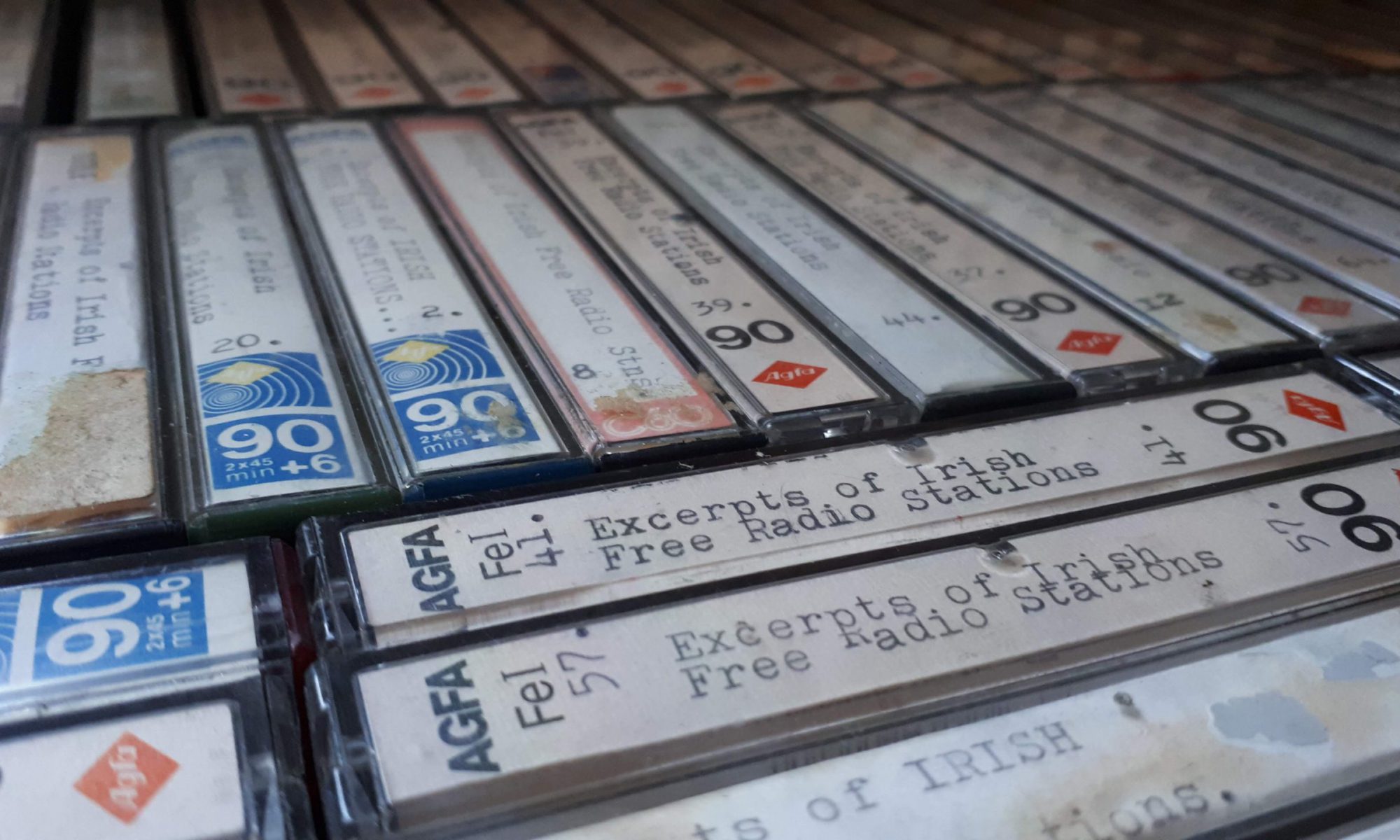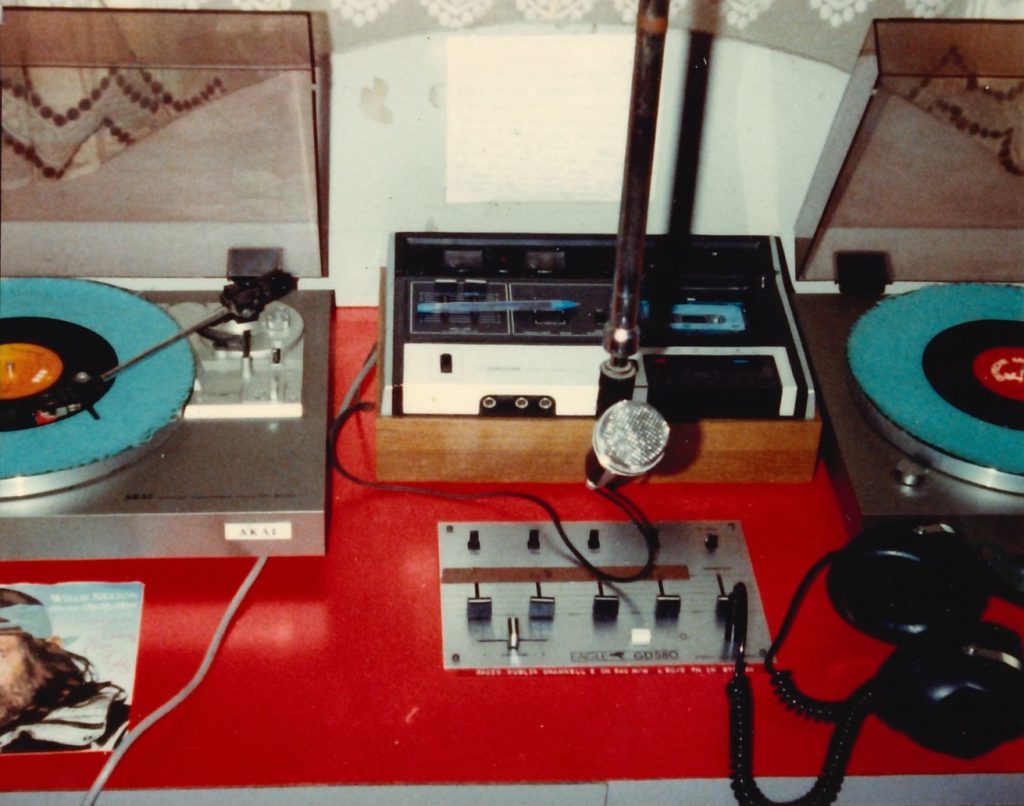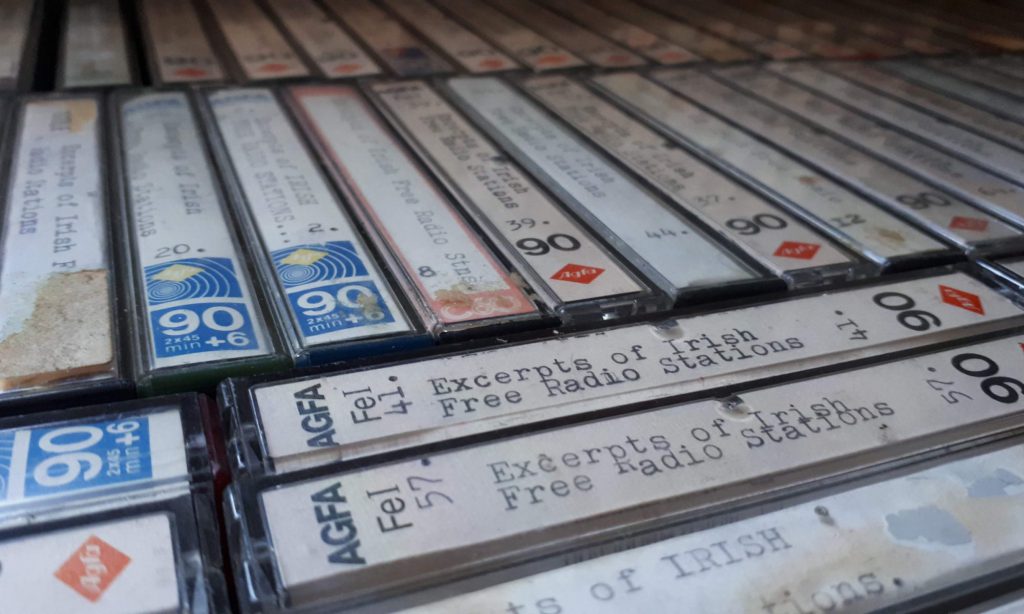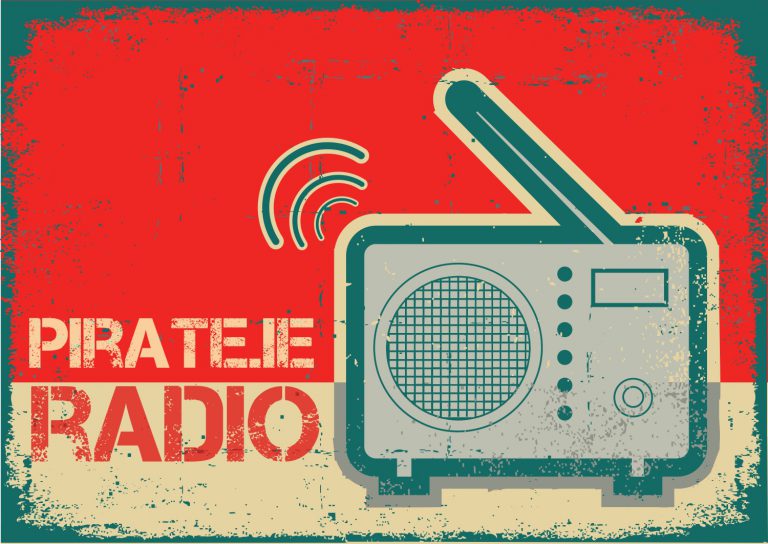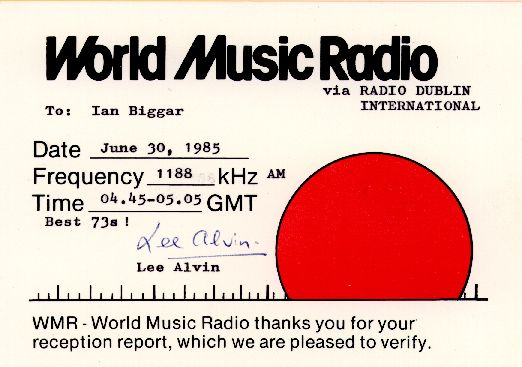Podcast: Play in new window | Download
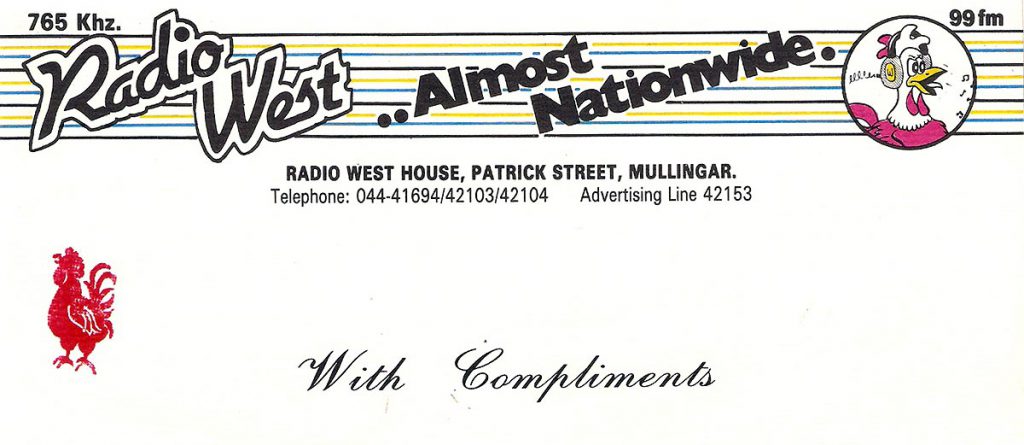
Finding suitable frequencies on the crowded AM band of the 1980s was one of the technical challenges facing the Irish pirates and the story of Radio West is a case in point. The midlands station began on 1071 kHz in 1982 before moving to 702 kHz and then 729 kHz, a bad choice given the presence of RTÉ’s Cork opt-out service on the same frequency. Radio West switched to 765 kHz on 27th June 1983, increasing its range within Ireland and beyond. From 1986-1988, it returned to 702 kHz, rebranding itself as ‘West National Radio 3’ and claiming national coverage on AM and a series of FM transmitters.
This tape was made from 765 kHz in the early hours of Saturday 9th July 1983 and features the closedown of Radio West for the night. The unidentified DJ signs off in both Irish and English and then plays the iconic Desiderata song, also used by Sunshine Radio in Dublin at closedown each night. The broadcast ends with the national anthem.
There is plenty of fading as would be expected in late-night DX reception outside the core transmission area. The recording was made in the English midlands and is from the Leon Tipler Tapes Collection, donated to us by Steve England.
